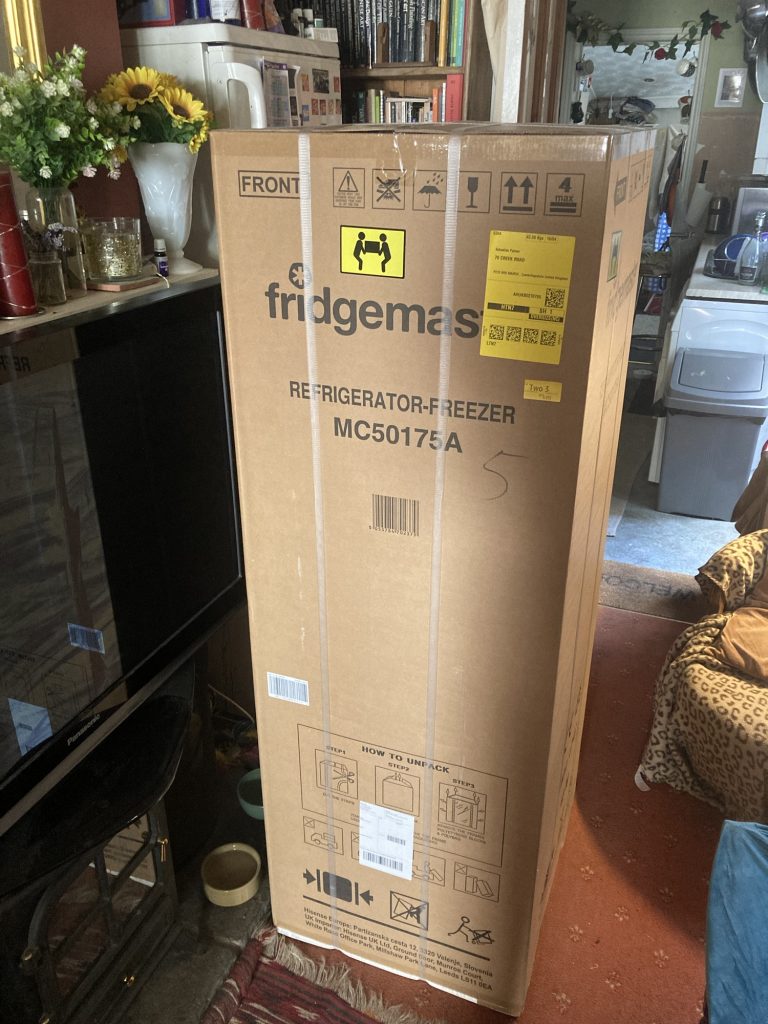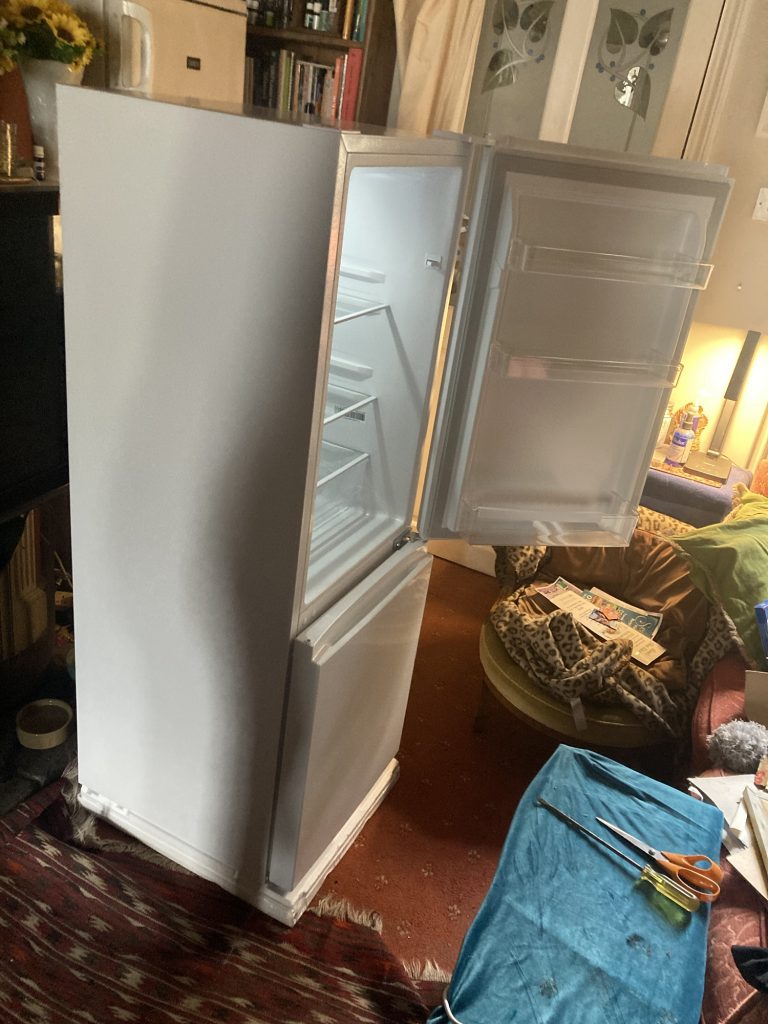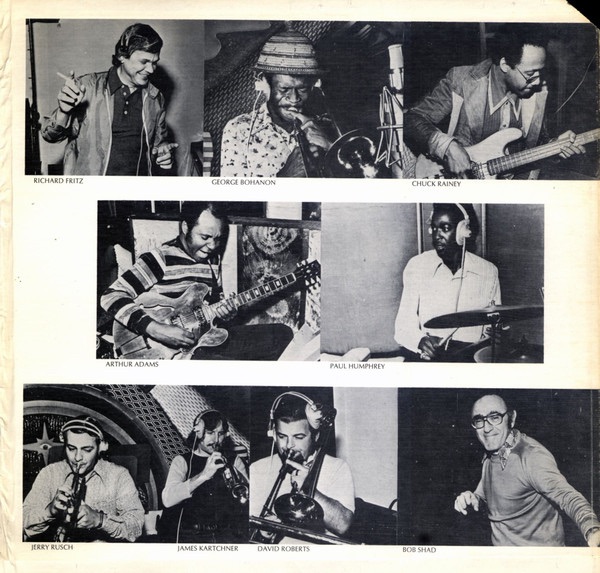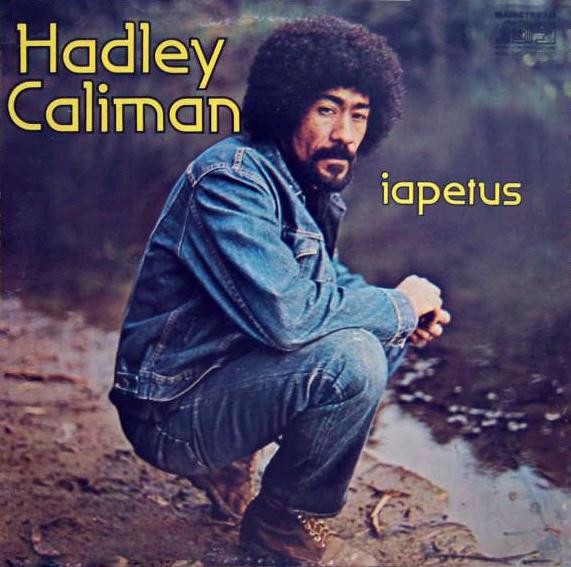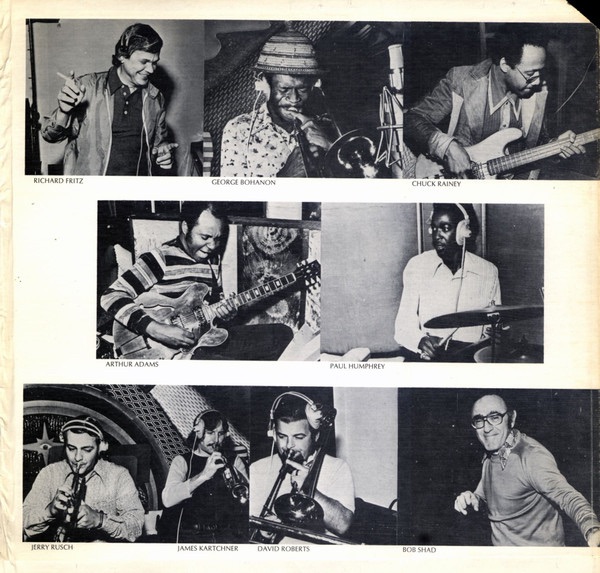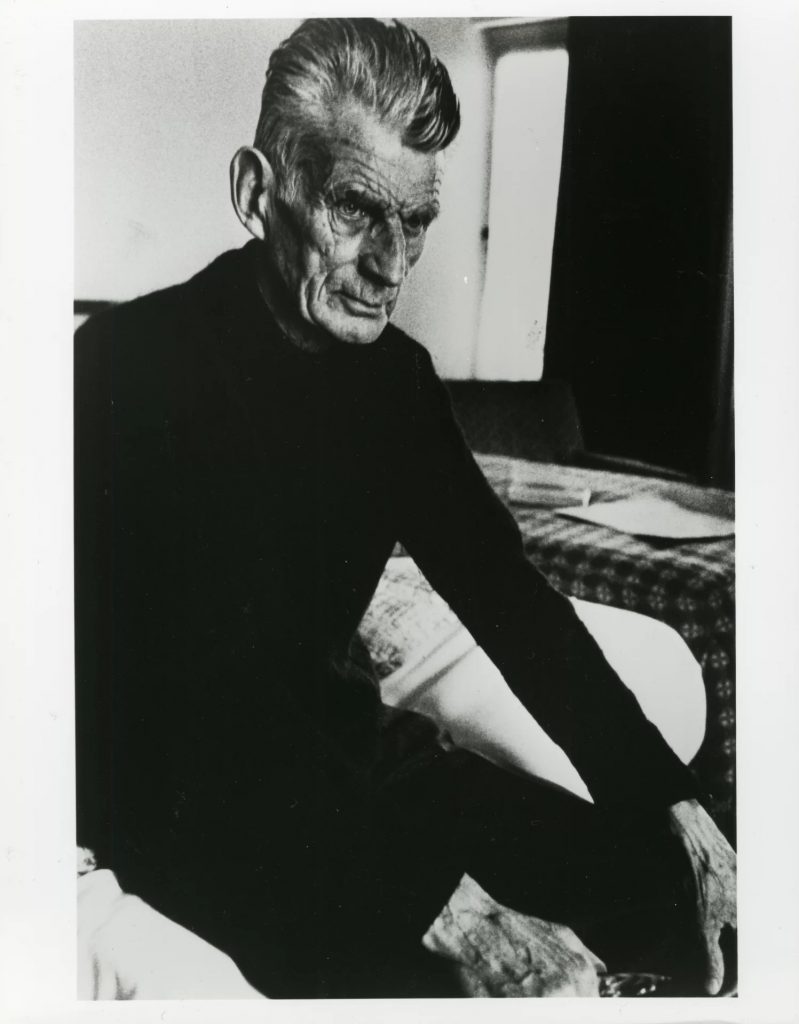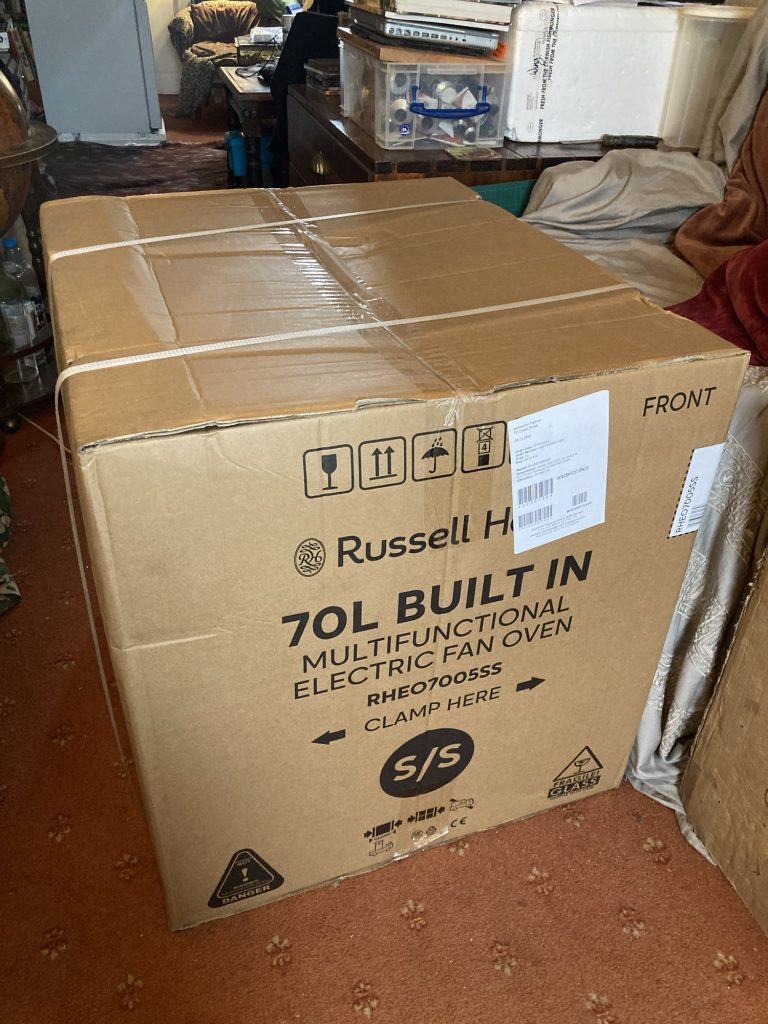
Woohoo! Our new cooker arrived today.
The main element of the old oven went, again. It did so once before; I ordered a new one and fixed it. But this old stinky dirty broken down thing needed to be replaced.

Whereas for the gas hobs I need a ‘gas safe’ certified engineer, to sort us out, with the electric oven it’s a pretty easy DIY job. You just have to be safe, methodical and accurate.

Getting the old cooker out wasn’t too hard. Awkward and heavy, yes. But a one man job, nevertheless. What this revealed though, was pretty grotesque.

I gave the internal space a good clean. And then got the new cooker in position to be wired in. It is of course hard-wired to the mains, as it draws a lot more power than your standard three-pin plug socket outlets. This is fiddly, but pretty easy.
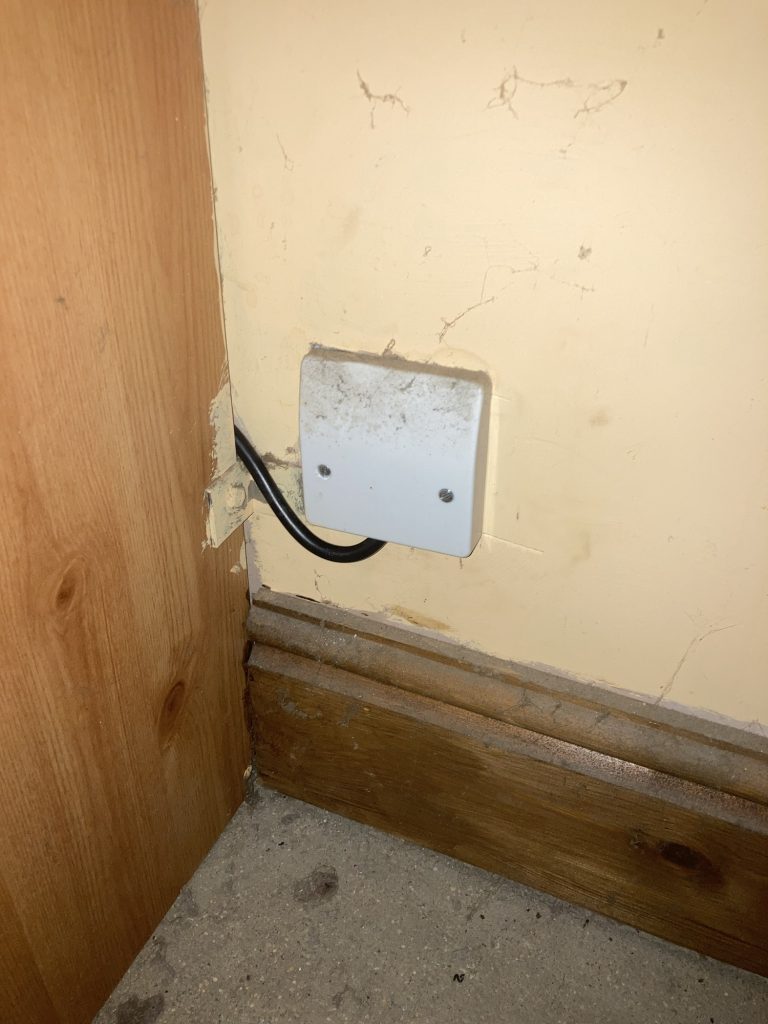
Done. Took a bit of sweat, some huffing and puffing. But it’s sorted now.

Rather foolishly I orders this oven – actually the same brand as our previous one (Russell & Hobbs) – without checking the dimensions! Could’ve gone horribly wrong!
But it didn’t. She fits the space like the proverbial glove. And once all the fuses and switches were turned back on, she powered up first time. Fab!

Very satisfying. Thanks again, Dan Ellis.

